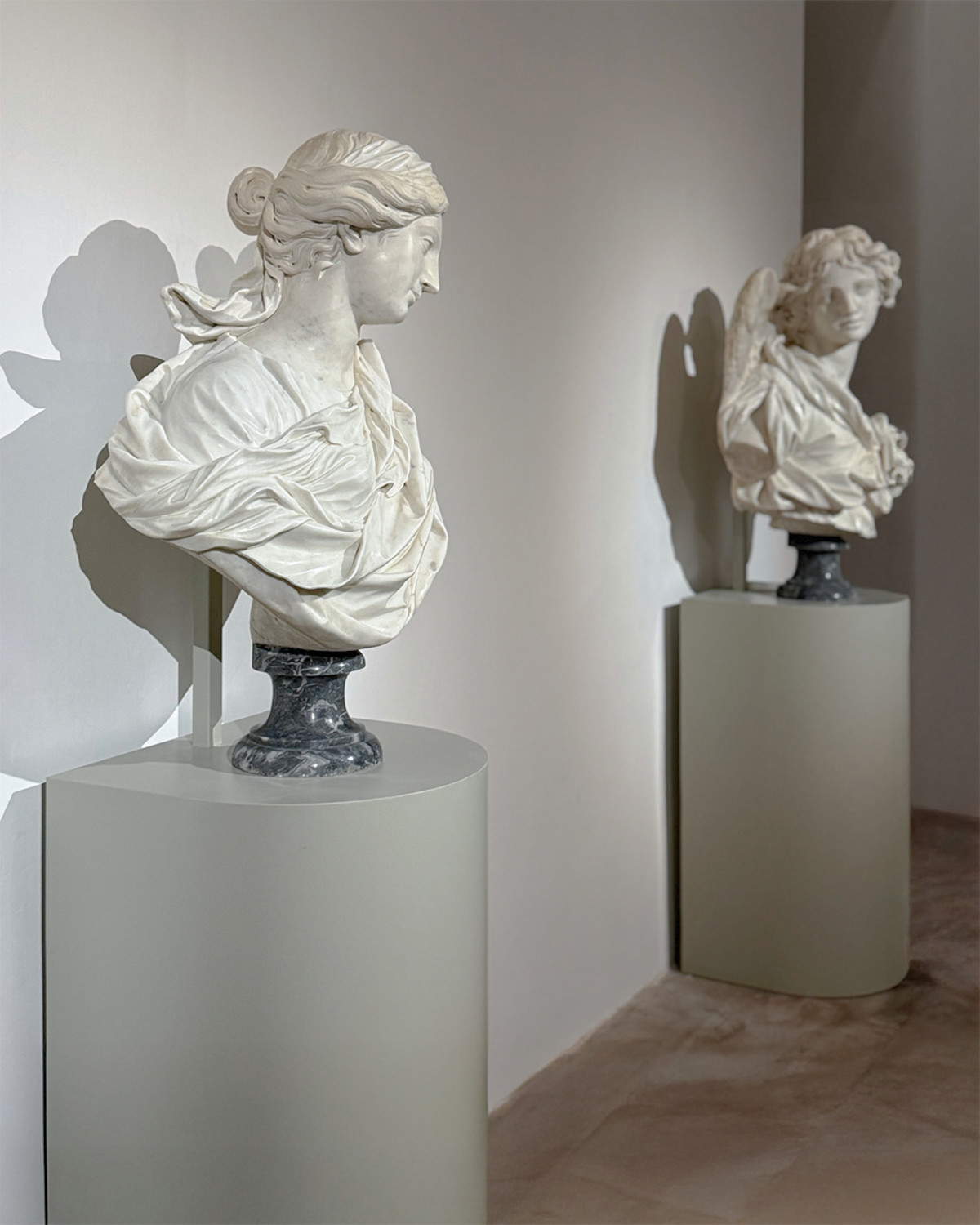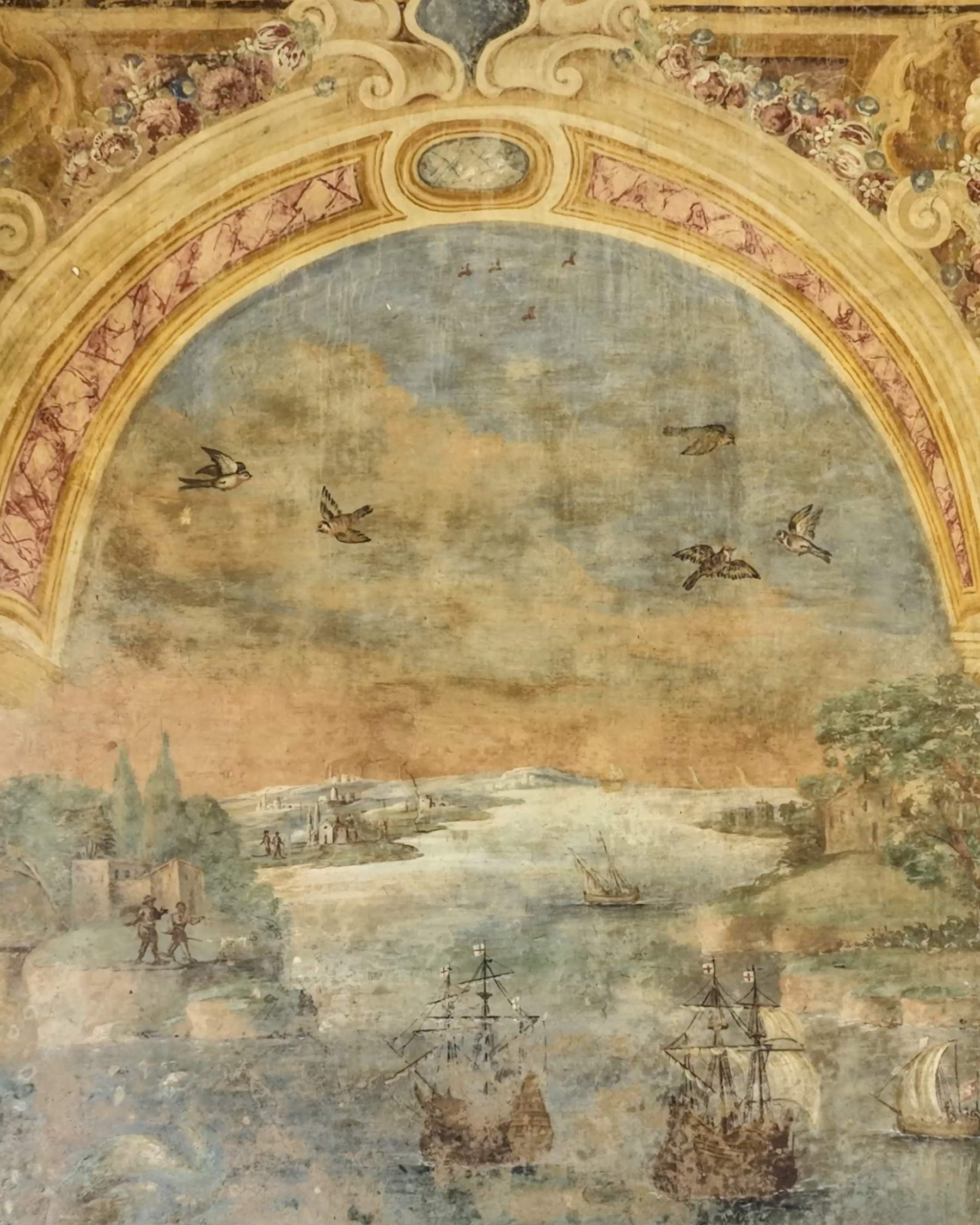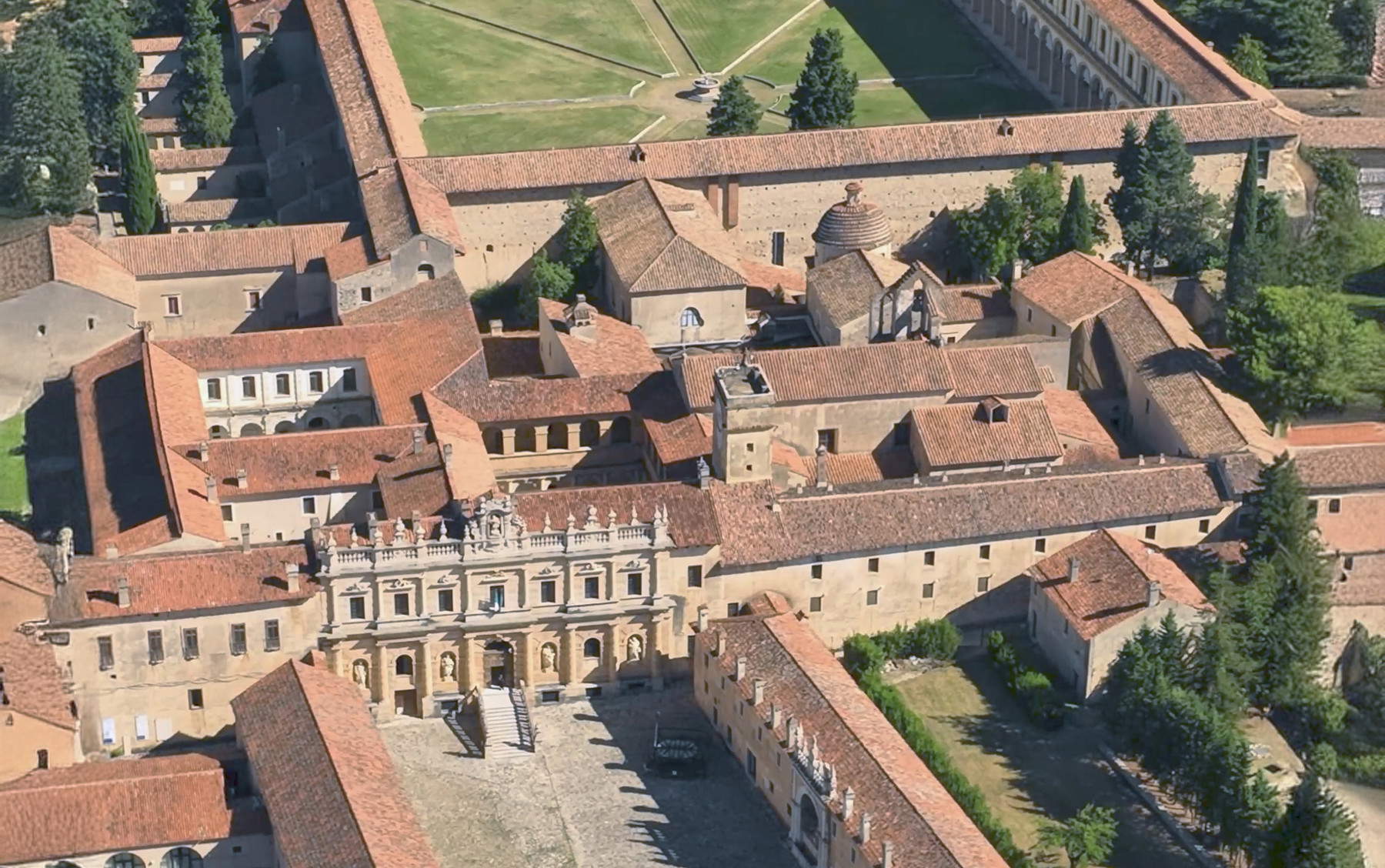Inaugurated at the Carthusian Monastery of San Lorenzo in Padula the new display of the Quarto del Priore, in the presence of the Director General of Museums Massimo Osanna, the mayor of Padula Michela Cimino, the acting director of the Campania Regional National Museums Directorate Luana Toniolo, the art historian andart historian and curator Paola D’Agostino, historian and lecturer at the University of Salerno Carmine Pinto, and the official of the same Directorate and RUP of the Genius Loci project Ilaria Menale.
The project to refurbish the Prior’s Quarto was created with the intention of making both the works of the exhibition La Certosa ritrovata, located in the covered walkway, and the Prior’s residence fully accessible, improving their accessibility from a cultural, cognitive and sensory point of view. The sculptures, paintings and architectural elements on display constitute the core ofthe artistic heritage that survived after the spoliations that followed the 19th-century suppressions of religious orders, which caused a significant dispersion of the works. Many of these, removed during the renovations, have only been recovered since the 1980s.
The exhibition itinerary follows a chronological criterion and recounts the different construction and decorative phases of the Carthusian Monastery, from the Middle Ages to the 18th century, highlighting how the complex has changed over time thanks to the intervention of artists and craftsmen. Highlights include capitals from the 13th-14th centuries, decorated slabs from the 15th century and, in the central hall, marble statues of the Archangel Gabriel and the Virgin Mary, recently attributed to Domenico Guidi (1699-1701). The itinerary concludes with the monumental bronze tabernacle by Jacopo del Duca, made in Rome between 1572 and 1574 commissioned by Prior Filippo Ghetti and inspired by Michelangelo’s designs. The tabernacle has been relocated in an arrangement that enhances its reading and highlights its reliefs dedicated to the Passion of Christ.

The Prior’s Quarto, the largest of the Charterhouse apartments, was the private residence of the head of the monastic community, who exercised both spiritual and temporal authority. It was also home to the Archives, custodian of the monastery’s rich documentation. Today, these rooms house paintings and sculptures from various parts of the complex. Among the most notable spaces is the private chapel dedicated to St. Michael the Archangel, patron saint of Padula, the only room that retains its original Baroque sumptuousness, with gilded stuccoes and four canvases attributed to Alessio D’Elia (18th century).
The garden below the Loggia, once rich in numerous tree and plant species and enlivened by fountains that still exist today, represented a place of great charm, which was also accessed directly from the Library. Throughout the 20th century, the Quarto was put to various uses, eventually becoming home to the Provincial Archaeological Museum. Restoration work in the 1990s brought back the original Baroque appearance, restoring harmony and refinement to the rooms.
The new layout, curated by Massimo Osanna, Luana Toniolo, Paola D’Agostino and Carmine Pinto, is based on a balance between protection, enhancement and innovation, to offer visitors an accessible museum experience consistent with the historical identity of the site. Alongside the restoration of the stone and ceramic elements and some of the canvases-including the eighteenth-century scagliola frontal, the Salvator Mundi, the Carthusian coat of arms, Guidi’s Virgin Announced and Jacopo Del Duca’s tabernacle-a modern lighting intervention has been introduced that enhances the reading of the spaces and works.
Thanks to a collaboration between the Campania National Museums Regional Directorate and the University of Salerno, the ICT Center for Cultural Heritage, directed by Francesco Colace, produced a 3D laser scan and a time-lapse video, curated by Angelo Lorusso and Miguel Sormani, documenting the delicate stages of disassembly and reassembly of the bronze tabernacle. The operations, carried out by Priore Art Moving s.r.l. with the expertise of restorers Sante Guido and Giuseppe Mantella, made it possible to digitally reproduce every detail of the work, including the dates engraved inside and the opening and closing mechanism of the side doors.
The design and direction of the work was entrusted to Studio Decima Casa, as part of a technical sponsorship with the Campania Regional National Museums Directorate, while the execution was handled by A.R.T. Ristrutturazioni s.r.l. The restoration of the works and the plexiglass elements of the tabernacle was supervised by DRMN Campania restorers Mery Moz, Annalisa Arcara and Maria Teresa Girfoglio, with the coordination of architect Antonietta Manco, RUP of the redevelopment of the Quarto del Priore, and the support of Antonella Ambruoso.
This intervention is part of the “Genius Loci” project (PNRR Investment 1.2 - Removal of physical and cognitive barriers in museums, libraries and archives), aimed at improving the cultural and sensory accessibility of 28 sites in Campania. At the Charterhouse of Padula, the initiative inaugurates an innovative dialogue between analog and digital, alternating moments of listening and participation with phases of storytelling and in-depth analysis, with the aim of making the visit increasingly inclusive and engaging.
The project also introduced dynamic QR codes, designed to be used directly by visitors’ devices, minimizing the use of technological equipment subject to wear and tear. This system provides access to multimedia and multilingual content, audio guides for the visually impaired, and even the Certosa’s Digital Twin, which is also available remotely. Some areas usually closed to the public-such as the Library, the spiral staircase, and the frescoed loggia-become visitable in virtual mode. A large touch screen, placed at the entrance to the route, offers additional interactive content, including a video with aerial footage taken with a drone and time-lapse of the tabernacle. Finally, a tactile map ensures accessibility for the visually impaired public as well.


Coinciding with the rearrangement, a new visual identity was also designed for the Charterhouse of Padula, conceived as the outcome of a reflection on the link between space, image and experience. The Charterhouse, a place where the silence of architecture meets the voice of the landscape, inspires a new visual sign intended as a symbolic threshold, a bridge between inside and outside, past and present.
The pictogram encapsulates multiple meanings in an essential gesture: the “C” as an initial but also as an opening; the spiral of the helicoidal staircase as a symbol of growth and transformation; the Baroque decorations as a memory sedimented in time. The lettering, inspired by the seventeenth century but reinterpreted in a modern key, along with a palette that combines the colors of the landscape with the warm tones of the stucco, becomes a narrative tool capable of evoking the interplay between light and shadow, matter and sign, memory and contemporaneity.
“Today’s inauguration represents a significant moment in the path of enhancement of the Charterhouse of Padula, which is opening more and more to the public, consolidating itself as a welcoming and accessible place,” said Director General Museums Massimo Osanna at the presentation. “The result of intense teamwork, led by an interdisciplinary team and in collaboration with the University, the new layout of the Quarto del Priore offers an engaging and inclusive visitor experience, in which the enjoyment of heritage dialogues with cutting-edge technological solutions. This is also an important result for the area, which finds in the Charterhouse a cultural reference point and a living garrison of participation.”
"The new set-up of the Quarto del Priore recovers and enhances one of the most important areas of the Charterhouse and many works hitherto not visible to the public, and which finally return to prominence in a renovated museum itinerary, inclusive and accessible both physically and cognitively, thanks in part to PNRR funds. This is a first step in the renovation process of the Charterhouse, which is undergoing more extensive restoration and enhancement works, concluded Interim Director Luana Toniolo.
The Charterhouse of San Lorenzo is open daily except Tuesdays, from 9 a.m. to 7:30 p.m. (ticket office closes at 6:45 p.m., last entry 7 p.m.).
Tickets: Carthusian Monastery of San Lorenzo (upper house and park): full price €6.00, reduced 18-25 years old €2.00, free under 18 and eligible under DM 507/1997 | Padula & Certosa card valid for 48 hours (lower house, upper house and park, civic museums: multimedia museum, Joe Petrosino’s house museum, San Giovanni in Fonte): full price 10.00€, reduced 18-25 years old 6.00€, reduced in case of closure or free of charge of Certosa 5.00€.
 |
| Carthusian Monastery of Padula, inaugurated the new display of the Prior's Quarto |
Warning: the translation into English of the original Italian article was created using automatic tools. We undertake to review all articles, but we do not guarantee the total absence of inaccuracies in the translation due to the program. You can find the original by clicking on the ITA button. If you find any mistake,please contact us.